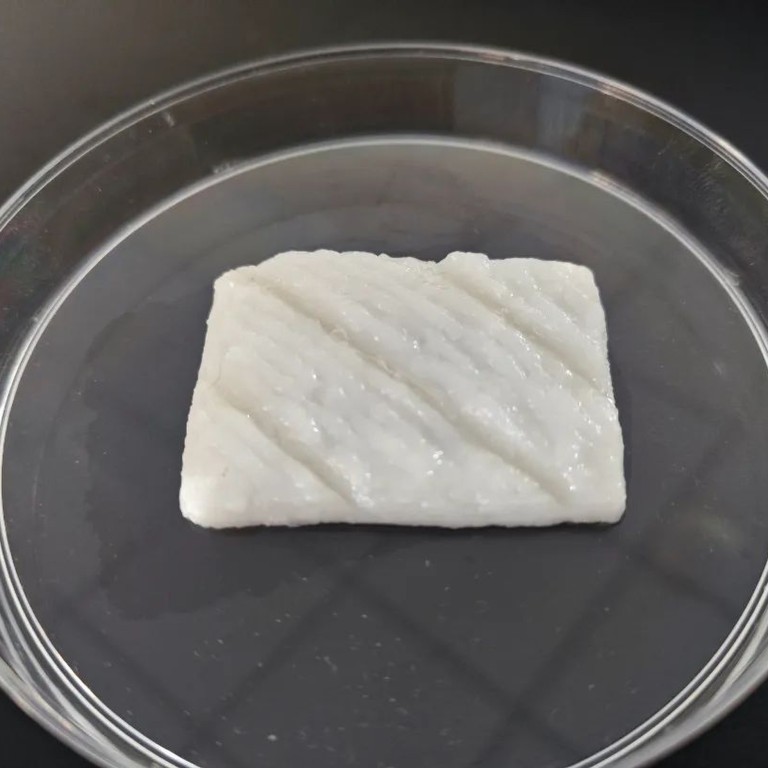
China scientists’ lab-grown fish fillets point the way to food future
- Study finds results ‘indistinguishable’ in flavour, colour and texture, suggesting potential as alternative protein source
- Cultivated seafood could also one day relieve pressure on overfished marine stocks, the researchers say
Developed over 17 days, the cultured fish fillets are indistinguishable from similar natural fish in flavour, colour and texture, according to the study published in the peer-reviewed Science of Food, an online open access publication from Nature Partner Journals.
“This technology may provide support for addressing the supply of meat and animal protein for human beings. It also has important implications for the conservation of marine fish stocks,” Liu said, on the university’s website.
Cultured meat – a genuine product achieved by cultivating animal cells in a lab – has emerged as an alternative to partially replace the traditional livestock industry in meat production, according to the research team.
Some researchers and companies have developed meat tissues from cows and pigs with the help of 3D printing technology.
Lab-grown meat - all you need to know about the newest ‘alt protein’
But there have been fewer studies on cultured marine fish because of the large diversity in muscle types among marine fish and a lack of supporting materials for a 3D scaffold to build the flesh structure.
For their study, the researchers cultured fillets of the large yellow croaker, a warm-temperature migratory fish in which muscle and fat cells account for more than 80 per cent of its body.
The fish is also an important economic marine species in East Asia, where it is favoured for its flavour and abundance in nutrients, but has declined dramatically in the wild due to overfishing.
The researchers isolated muscle and fat stem cells from the large yellow croaker’s tissues to “seed” the cultured fillets, putting them in a culture medium to let them grow.
Fat stem cells grew well in the culture medium, but muscle stem cells had a low efficiency of differentiation, according to the study.
Plenty of fish in the ocean? Not so around China, study warns
But then the team discovered two signalling pathways that affect muscle cell differentiation. By inhibiting the two signals in the cells with small-molecule drugs, the efficiency of differentiation improved from 1 per cent in the control group to 32 per cent.
As the muscle cells grew and differentiated, more fish meat was produced, but was just paste, the authors said.
“At this point, the fish is still a loose mass of cells with no fixed shape. It doesn’t have the tissue structure that people perceive as meat,” said co-author Chen Jun, also a researcher at Zhejiang University.
The researchers constructed a 3D scaffold with a gelatin-based gel to provide a structure for the cells to grow.
Lab-grown meat’s slow start in Singapore: will gourmet fish maw trump chicken?
Compared with the natural fish tissue, the researchers found the cultured fillets similar in terms of the number and ratio of muscle and fat cells, as well as their hardness, gumminess, resilience, and water content.
But the chewiness of the cultured fish fillets was low and water distribution different to the naturally raised seafood, the authors said.
“In summary, we have successfully developed a pipeline for the production of tissue-like cultured fish fillet. It demonstrates that biomimetic scaffolds based on real tissue structure have a great potential in the production of tissue-like cultured meats,” they said.

